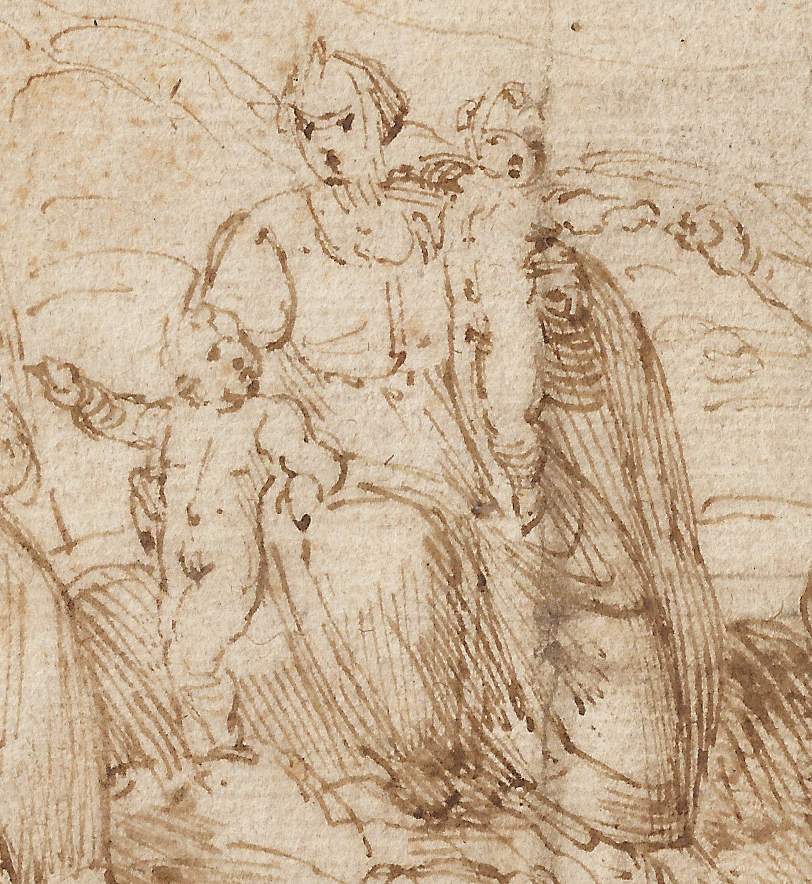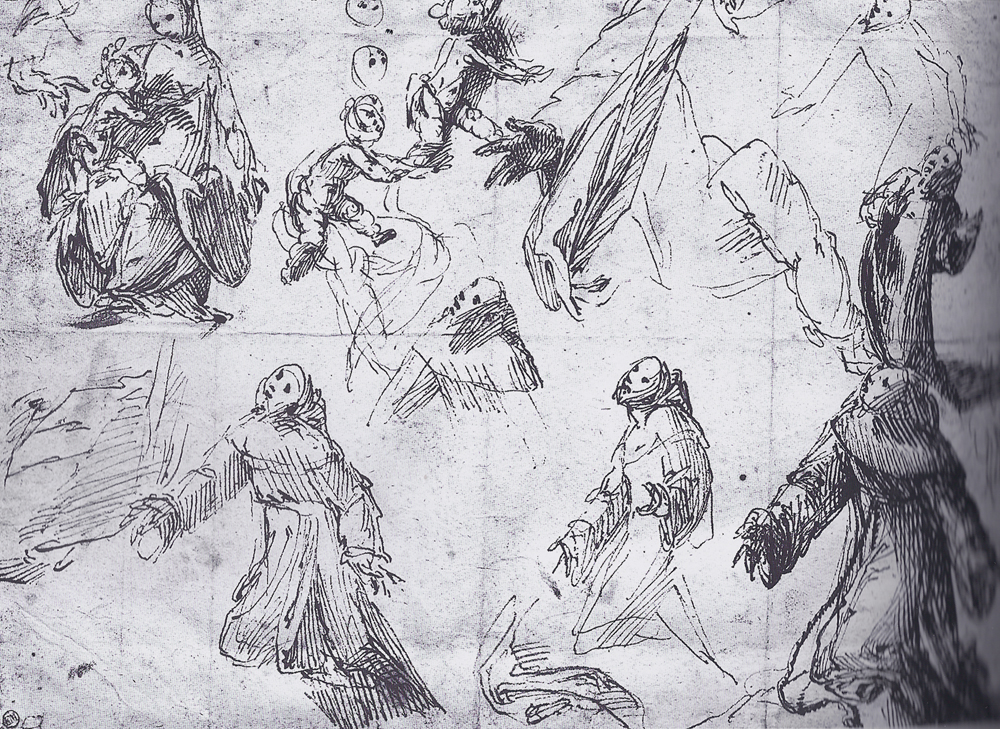FRANCESCO CURIA (Naples 1538 – 1610 Naples)
Francesco Curia (Naples 1538 – 1610 Naples)
The Theological Virtues: Faith, Charity and Hope
Pen and brown ink, 108 x 161 mm (4.3 x 6.3 inch)
Provenance
~ Unidentified collector’s mark G.R. (Lugt 1198), pen and green-brown ink in an early hand, lower left
~ Victor Winthrop Newman (1860–1934), New York, his drystamp at lower left (Lugt 2540)
~ Private collection ‘Monsieur J.J.S.’, Paris, until 2013
***
This sheet, recently identified by Nicholas Turner, is an important addition to the drawn oeuvre of the Neapolitan artist Francesco Curia, one of the leading painters of the late Renaissance in Naples, before the arrival of Caravaggio.1 The artist was largely forgotten for centuries, until his painted oeuvre was reconstructed in the second half of the 20th century. More recently, a corpus of works on paper has been established, based on collections of his drawings in the British Museum and the Capodimonte Museum, Naples, and especially on a surviving sketchbook in the Nationalmuseum, Stockholm, which was acquired by Count Tessin at the sale of Pierre Crozat in 1741.
Curia was taught by Giovanni Filippo Criscuolo (c.1500-1584). Various influences can be discerned in Curia’s paintings and drawings, most notably those of Vasari and Salviati. In general his juvenile drawings show a strong awareness of Emilian mannerism.2
This interesting sheet shows the Theological Virtues of Faith, Hope and Charity. Seated left is the personification of Faith (‘Fides’), holding a crucifix and a chalice with the Holy Host, and accompanied by a dog, a symbol of fidelity. At the centre is Charity (‘Caritas’), accompanied by two infants, and at the right is Hope (‘Spes’), identified by an anchor, and offering an apple to one of the infants. The theme was quite rare: Raphael depicted the Virtues in three small panels as part of the predella of the Baglioni altarpiece of 1507 (Vatican Museums, Rome), and a set of three panels with the three Virtues by an anonymous Umbrian painter of c.1500 is preserved in the Metropolitan Museum, New York (fig.).3
The composition is derived from paintings of the Madonna and Child ‘in sacra conversazione’ with various saints. Although the artist of our drawing has attempted to enliven the symmetry of the composition by placing the infants at different levels, the general design is still very much in the manner of the High Renaissance, for instance in Sacred Conversations painted by Giovanni Bellini.
Mr Turner has compared our drawing to a sheet with studies of the Virgin and Child and St Francis by Curia in the Nationalmuseum, Stockholm (fig.).4 Particularly striking are the long vertical hatching lines defining shadowed areas, sometimes overlapping with other groups of hatching lines, and the delineation of faces and anatomy. Drawings by Francesco Curia appear on the art market extremely rarely.
SOLD
1. I am grateful to Nicholas Turner for the identification (in an email of 12 June 2013).
2. For the artist, see Ippolita di Majo, Francesco Curia, l’opera completa, Naples 2002.
3. Inv. 1982.177.1-3; Laurence B. Kanter in Painting in Renaissance Siena: 1420–1500, exh. cat., New York (The Metropolitan Museum of Art) 1988, pp. 344, 346–51, nos. 75a–c.
4. Pen and brown ink, 175 x 249 mm; inv. no. NM721/1863; Di Majo, op. cit., p. 167, no. D70, repr. p. 168.





